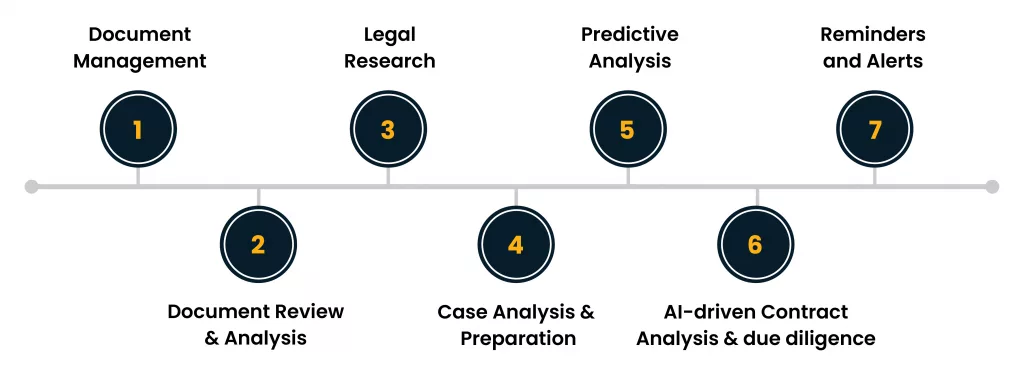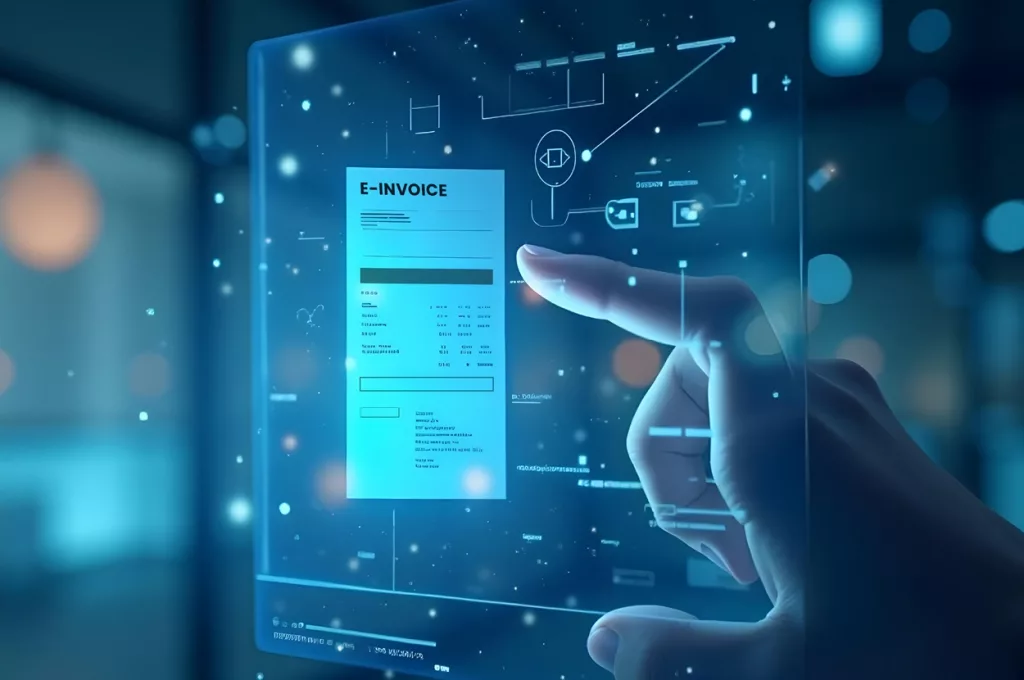AI has been taking over the charge in every field, mainly not to replace the experts but to provide more efficient and error-free outcomes and, at the same time, reduce the burden of repetitive tasks, critical management, and many other tasks to help the experts focus on more important and productive work.
Recently, AI has developed efficiency in pioneering legal practice and Law. Though AI has proved to be increasingly efficient, there is always a question of whether it is ethical to integrate Artificial Intelligence in legal practice.
While many businesses and lawyers are still skeptical about using AI tools, their failure to integrate Artificial Intelligence in legal practice may soon become a major deficiency in their workflow optimization and efficient practice.
According to the 2023 State of Practice: Tech & Compensation survey, the use of AI in litigation is still emerging. While 53% of law firms are holding internal discussions about AI, only 11% have invested in AI technology, and 7% are actively developing their own generative AI tools. More law firms are focused on advising clients and businesses about AI rather than adopting it themselves, with 30% advising businesses on its use. Firms are cautious, with 31% restricting external AI usage, reflecting the gradual adoption of AI in legal practices.
In this blog, we’ll explore how AI tools designed for legal practice significantly impact litigation, its current applications, and what the future holds.
Key Areas Where AI Enhances Legal Practice
As per Bloomberg Law’s survey, “The most common uses include drafting and templating communications such as memos and emails 58%, conducting legal research 53%, summarizing legal narratives 42%, and reviewing legal documents 34%. AI is also aiding in drafting contracts 23%, conducting due diligence 21%, reviewing discovery 15%, negotiating contracts 11%, and preparing case filings 8%. Estate planning is currently the least common use, with only 2% utilizing AI for this purpose.”
Here are the key areas AI can be used for legal practice:

Document Management
AI-powered litigation solutions can be considered a most helpful tool for document management. Each case would have hundreds of documents such as notices, cross-examinations, replies, supporting statutes, similar citations, supporting documents, etc., which are crucial to maintain and manage without any loss.
AI-based litigation solution facilitates the searching of required cases and documents and files related to the case and extracts a synopsis of the case mentioning the matter of the case, parties involved, court and jurisdiction, background and context of the case, the value involved, current status, etc. to help businesses avoid oversight of any important information and reduce the risk of fines and penalties.
Document Review and Analysis
AI-driven legal practice tools have revolutionized document review and analysis for businesses and professionals as AI/MI can read and review many documents, text, images, etc., and provide nuanced information required for decision-making. These tools can understand multiple languages, concepts, and jargon, simplifying and easing case preparations. AI algorithms can scan these files for relevant keywords, patterns, and phrases faster than manual review making it easy for the organizations to manage the legal process efficiently and accurately.
Legal Research
Legal research is one crucial part of case preparation, but it is also very time-consuming and error-prone. Lawyers or professionals must undergo long and tiring research to get the required outcome, and they must sift through countless precedents, statutes, and case law to build their arguments.
AI-based solutions can streamline the process by analyzing vast amounts of data in minutes and evaluate legal support from law, rules and regulations, their supporting arguments, court citations or judgement of similar and most relevant cases, offering legal defense guidance and supporting documents in minutes.
Case Analysis and Preparation
AI-driven legal practice tools are specially designed to optimize the legal workflow. Such solutions use AI/ML, which is trained to understand the legal documents, processes, legal research, different cases, governing acts and regulations, their outcomes, supporting cases, valid arguments, supporting documents, etc.
AI-based litigation solutions can identify patterns and suggest strategies in case preparation. AI also efficiently flags relevant documents to reduce the chances of overlooking crucial evidence.
Further, these litigation tools are specially trained in legal drafting, which would help them provide assistance in drafting replies to the notices without hallucinating and including links or references for verification and assertion of the draft.
Predictive Analysis
AI/ML’s algorithm would analyze cases and predict their outcomes based on past cases and current evidence. This would help in risk assessments and timely measures to achieve positive outcomes. This would help measure the value of contingencies and business expectations and guide relevant strategic decisions.
AI-driven Contract Analysis and due diligence
For corporate cases such as mergers, acquisitions, corporate disputes, etc, contracts are crucial part, yet tedious and time-consuming to refer long contracts and prone to human errors, misunderstanding, or oversight. AI tools can quickly analyze contracts and identify risks, discrepancies, and missing clauses, allowing a legal person to focus on more high-value tasks
Reminders and Alerts
When a business grows, it is tough to remember every task and its deadlines, which can lead to fines, penalties, and a hindered reputation. AI-driven litigation tools provide timely reminders to the respective authority for timely approval of documents, case preparations, upcoming hearings, reply to submission deadlines, and more to ensure the process is completed well on time.
Ethical concerns related to AI-driven Legal Technologies
With AI being popular worldwide, it would not be wrong to say that every business organization would have at least one AI-driven function in current market dynamics. While many businesses are keen to explore AI for their work processes, we cannot deny the concerns and risks associated with it. The main concerns related to AI will be as follows:
Hallucination and accuracy
AI models, mainly large language models, can produce text that seems factual but is inaccurate or fabricated, which is described as a hallucination. In legal work, AI-generated errors or work content can mislead and pose serious risks. If legal briefs, contract reviews, or case summaries contain incorrect information, it could compromise a case’s outcome.
Deep Fake
AI-generated deepfake may fabricate evidence like videos, audio, images, etc, to create convincing but false representations of people, including witnesses or defendants, and mislead the critical outcome of the case by judges and juries. The risk of using doctored evidence could undermine the integrity of the legal system and increase the difficulty in verifying the authenticity of digital materials.
Data Privacy
Litigation involves many confidential, sensitive, and crucial documents and data that, if leaked, would tarnish the business’s reputation. Integrating AI for processing, storage, and use of this data needs careful consideration and attention. Any data breach, unauthorized access, or instruction would have severe repercussions on the case and on the company.
Model Bias
AI models are trained based on historical data and past case drafting, which are prepared by individuals and can contain inherent biases. If AI models used for legal decision-making are biased, they could perpetuate existing inequalities, leading to unjust outcomes. A biased algorithm may affect certain demographics of the case, affecting the penalties of the case.
Though these concerns are vital, they can be handled with proper technologies and security measures. However, the cost of not considering AI would be much more than the damage AI may cause to a company.
Future of AI in Litigations
According to the reports of Thomson Reuters, “A remarkable 79% of law firm respondents anticipate that AI will have a high or transformational impact on their work within the next five years, a significant ten percentage point increase from 2023. Moreover, the belief in AI’s transformational potential has surged, with 42% now holding this view, up from 34% in the previous year. These findings underscore the growing recognition of AI as a game-changer.”
AI assistants will handle tasks like scheduling, document assembly, and marketing, with human lawyers using them as efficiently as real assistants. They could help tailor pleadings to each judge’s preferences, enhancing court efficiency. AI may support judges by analyzing vast data to identify sound legal arguments over mere courtroom performance. It may read emotions during trials; it could analyze the body language of both the parties involved, judge and lawyers, etc., assess biases or tactics, and provide real-time advice during court proceedings.
Why Trust Cygnet for Your Litigation Needs?
Cygnet offers a comprehensive litigation management solution that is perfect for streamlining legal processes. Automatically organizing notices to reduce the risk of missing deadlines. AI-powered tools assist in drafting notices, providing relevant legal precedents, and offering defense strategies. The platform ensures secure access to case data and offers real-time tracking, calendar alerts for court hearings, and dashboards for insights. With these capabilities, Cygnet significantly reduces human errors, saves time, and enhances legal efficiency, making it ideal for businesses managing complex litigation.
Looking Forward
In conclusion, AI is set to reshape litigation by automating tasks, improving accuracy, and streamlining processes. This will ultimately reduce human error and enhance productivity in legal practices. With innovations in virtual legal assistants, predictive analysis, document management, and real-time data insights, AI tools offer a future where legal professionals can focus on high-value work while leaving repetitive, time-consuming tasks to technology.










